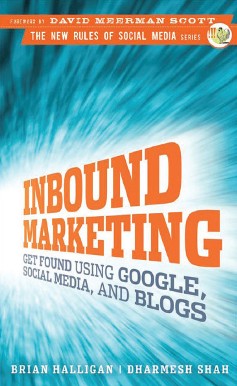
Today’s blogosphere counts several millions active blogs offering a great variety of topics and content. The wonderful aspect of a blog creation is that anyone who has a particular hobby, knowledge, passion or a business to promote, can easily do it.
The danger, though, is to start a blog without a specific plan, target group and more importantly knowledge of content creation. Good content is the most important factor of your blog since not only it is the key to attract readers and turn them to loyal followers but also to increase your internet exposure via the Search Engines.
Indeed, despite the fact that each blogger may have his own writing style – and therefore defining what is “good blog content” is subjective since each person has its own personality and needs – there are some basic rules to follow in order to produce successful content and, at the end of the day achieve your blog’s goal: get read and encourage readers to visit back your blog.
With the following blog writing tips and a little practice, you will certainly become an active part of the blogosphere:
1. Define your blog’s identity and target group
The 1st thing to do is to organize your ideas and define a main topic that will determine your blog’s identity, according to your goals.
- What do I want to communicate about?
- What is my target group?
- What type of language should I use to communicate with my target group?
2. Make a timeplan of your postings
No need to rush and start posting if you only have one post idea in mind; a blog needs time and efforts to stay permanently active and help you interact on a regular basis with your readers. Make a realistic timeplan for postings after having defined your main topic, write down ideas for future posts and stick to them. Don’t risk losing your audience because of a lack of communication.
3. Talk to your audience
Having defined your target group, you will need to write in the appropriate tone and style to attract their interest and understanding; imagine having a conversation with your audience and write clearly and simply as if you were talking to them.

4. Give your content a friendly format
Even if you believe your post is original and really interesting, if it comes in a big block of text, no one will take the time to read it; you need to provide the reader with a friendly post format by separating it into distinct and concise paragraphs, preceded by sub-headings, use bullet points lists where needed, illustrate it with images, use bold or italics to point out your key elements and you’ll get your reader’s attention.
5. Use attractive Titles
Once your post is written, take your time to come up with a GOOD title. What is a good title, how will I attract the reader? It should directly inform the reader regarding what your post is about, a sort of “summary” of what he will read. You can read more on how to optimize your titles in the article “7 Tips on how to write optimized webpage titles“.
6. Optimize your article for the Search Engines
Ask yourself which terms are more likely to be used by users, when they search for the particular topic on search engines. Then make sure you create a list of the main keywords and come up with different variations that are likely to be searched. Finally try to incorporate the keywords of your post, in order to increase the possibility to be found in the Search Engines. Note that adding the most important keywords in your Title, H1-6 and in the first few lines of your text is very likely to give you an SEO boost.

7. Update your blog frequently
As mentioned earlier, you need to have determined a time plan in order to frequently update your blog, ideally on a daily-basis. This will not only keep the attention of your readers but also it will help you attract more links and improve your SEO. The more content you produce the more traffic you are likely to get from Search Engines.
8. Set up an RSS feed & use social media buttons
By setting up an RSS Feed and by encouraging your users to subscribe, you will increase your readers and you are more likely to get more returning visitors. Note that most Blogging engines automatically support RSS feeds, so all you need to do is to place their button in a strategic position in order to help readers subscribe.
Additionally Social Media can drive you lots of traffic and they can help you build communicate with your readers. Some social media and bookmarking sites such as Twitter and Delicious are build to help bloggers promote quality content. Make sure you add sharing buttons in your site and try to place them too in a strategic positionto increase the number of shares. Don’t forget that the Social Media Buzz serves as a Ranking signal and thus itaffects your SEO.
9. Write How-to and “Top 10” articles
The How-to guides and the “Top 10” articles usually become very popular on social media networks. People love these articles and they are more likely to read them, share them and bookmark them. Additionally by creating such content you are more to increase your Search Engine traffic since lots of users search for such content regularly.
10. Last but not least: Proof-read
This might be common sense but sometimes we can be so enthusiastic about a new post that we forget to take the time to proofread it! Remember that you may be listed and archived in the Internet along with your grammar, syntax or even informative mistakes!
Don’t forget to be honest and keep a genuine interest about what you share. If you have the patience to keep being an active blogger and creating good content, you will be surprised to see your audience growing and your blog getting the success it deserves.
Images by mashable & kaushik
See this Amp at http://amplify.com/u/bruls

 Google made a substantial revision to its search algorithm today, the
Google made a substantial revision to its search algorithm today, the 

 It’s nearly impossible to keep up with the chatter surrounding the iPad 2. Every day it seems like there’s a new rumor about a new model, a new launch date or even a USB port. It’s a bit overwhelming.
It’s nearly impossible to keep up with the chatter surrounding the iPad 2. Every day it seems like there’s a new rumor about a new model, a new launch date or even a USB port. It’s a bit overwhelming.








 The
The  Name:
Name: 










 Around 68.7 million Americans will be playing social games by 2012, according to analysis firm
Around 68.7 million Americans will be playing social games by 2012, according to analysis firm 




 The word on the street tonight is that Apple is toying with the idea of a much larger screen for the
The word on the street tonight is that Apple is toying with the idea of a much larger screen for the 

 So if spam-blockers, TiVo and mute buttons have convinced you to reconsider expensive outbound marketing techniques, have I got a book for you! It’s
So if spam-blockers, TiVo and mute buttons have convinced you to reconsider expensive outbound marketing techniques, have I got a book for you! It’s 
 Internet users’ search for online video content is growing exponentially. Indeed, people are usually attracted by videos and are more likely to remember and refer to a video than to any other form of advertisement. Additionally they consider them as a more reliable source of information.
Internet users’ search for online video content is growing exponentially. Indeed, people are usually attracted by videos and are more likely to remember and refer to a video than to any other form of advertisement. Additionally they consider them as a more reliable source of information.